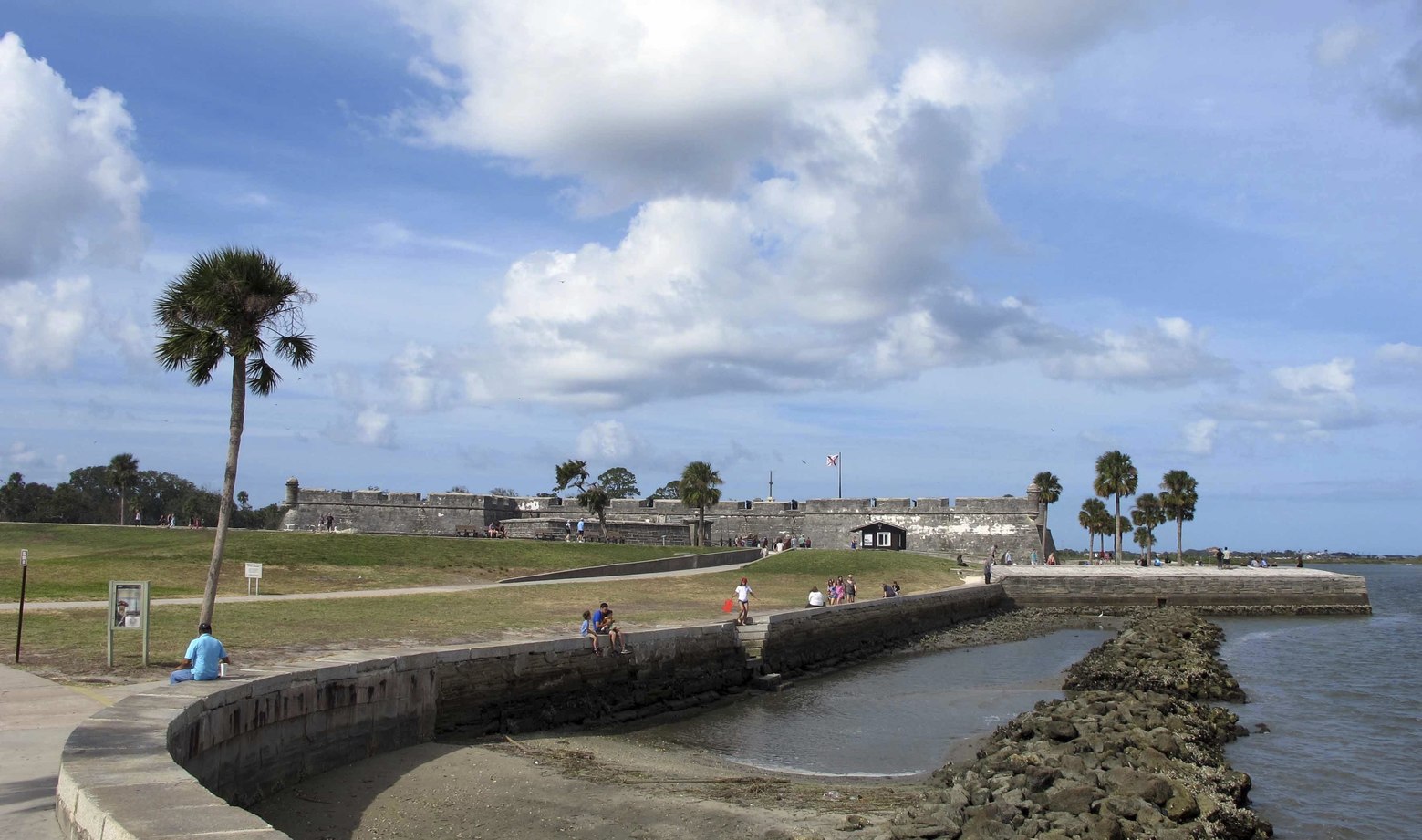
St. Augustine’s iconic Spanish fortress escaped serious harm during Hurricane Matthew, but more than 1,000 historic homes and buildings in north Florida’s landmark colonial city were damaged by the storm, according to preservationists.
Experts with the University of Florida said water flooded all seven of St. Augustine’s federally designated historic districts last month, damaging about half of all the 2,000 properties in those areas. Homes and businesses along the city’s waterfront were overwhelmed despite a $6.7 million seawall completed in 2014.
“The damage was significant,” said Morris Hylton, director of University of Florida’s historic preservation program, who spent three days helping federal authorities record the damage. “Many, if not a majority, of the historic properties, in particular private residences, were impacted.”
Among the famous buildings inundated during the hurricane was Flagler College’s ornate Spanish Renaissance-style main hall, built in 1888. As much as four feet of water surged through its basement and breezeway, but the hall’s higher floors remained untouched.
School president William Abare, who has served at Flagler for 45 years in different roles, had never seen storm surge in St. Augustine like Matthew’s. Blamed for at least 42 deaths in the United States, Matthew raked a large part of the Southeast Atlantic coast last month after killing more than 500 people in Haiti.
Abare refused to evacuate, watching as water flowed over the campus in St. Augustine. Local historians long have claimed the city as the oldest continuously occupied European-established settlement in the mainland United States.
“It was a scary sight for me as water was coming over our perimeter wall,” said Abare, referring to a 3-foot-high wall. “You couldn’t see the top of the wall.”
He said the building, a designated national landmark, did not suffer major damage. The school was shut down while crews pumped out water and fixed the electrical system, then reopened within a week. In all, he said, the campus sustained about $1 million in damage, and St. Johns County where St. Augustine is located has estimated about $139 million in damage thus far.
On the city’s waterfront, Joel Bagnal and his wife Hookey Hamilton found their house – built in the late 1700s – completely flooded.
The home’s interior walls are made of coquina, the same waterproof concrete-like material made of crushed shells that the Spanish used to construct the fortress nearby.
The coquina withstood the salty water, but newer materials such as drywall and modern plaster that covered the older walls were ruined and had to be removed. Since the original walls are now exposed, he said the disaster may result in the original coquina walls being restored since they’re better at handling floods.
While restoring historic homes damaged in the hurricane can be expensive, people like Bagnal and Hamilton who own and reside in historic houses can apply for FEMA assistance to help with the cost of repairs. Historic buildings that are publicly owned are available for up to 75-percent reimbursement for restoring them to their pre-disaster condition.
“It’s upsetting of course,” said Bagnal, a goldsmith. “But I’m the kind of guy who takes lemons and makes lemonade.”
Republished with permission of the Associated Press.



